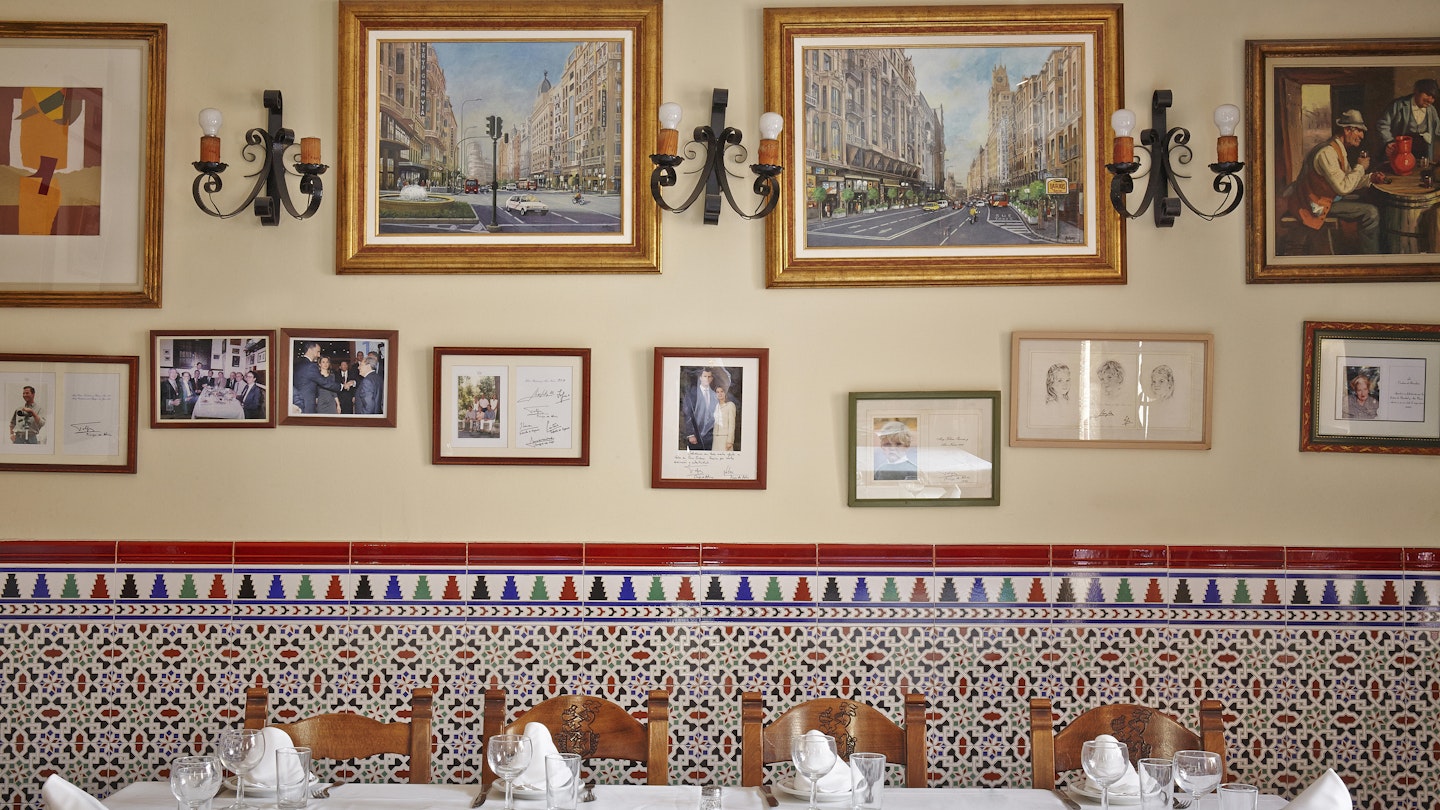Historic Centenarios in Madrid: A Culinary Journey
Madrid is a historic city that has witnessed a succession of monarchs, revolutions, and artistic movements. Vestiges of this storied past can be found in the city’s centenarios – restaurants, bars, and cafes over 100 years old.
Venturing into any of these centenarios is like stepping back in time to share the space where kings and merchants, writers and artisans, priests and assassins once wined and dined. Moreover, these establishments stand the test of time, offering excellent traditional Spanish dishes and beverages. Here are our favourites.
Bodega de la Ardosa (1892)

Faded sepia photographs and dusty wine bottles line the bar shelves of this wine cellar in Malasaña. Housing the oldest Guinness beer tap in Spain, this locale is perfect to kickstart your tapas adventure with a glass of wine, excellent vermouth, or European beers served on wooden barrels-turned-tables. Their tortilla de patata (potato omelette) tops many “Best Tortilla” lists among locals and food critics.
Lhardy (1839)

A stone’s throw from Plaza de la Puerta del Sol, this iconic restaurant has retained its original chandeliers, varnished wallpaper, and gilded fixtures since the Romantic era. A few aesthetic adjustments mark the passing of time, like the grand gold mirrors painted black in 1904 to memorialize Queen Isabella II’s death. Lhardy is celebrated for elevated versions of traditional Spanish cuisine, including cocido (chickpea stew) and callos a la madrileña (beef tripe and sausage stew).
Sobrino de Botín (1725)
The world’s oldest restaurant, according to Guinness World Records, serves excellent cochinillo asado (roast suckling pig) and cordero asado (roast lamb) cooked in its original cast-iron wood-fired oven. Additionally, a walk down the basement steps unveils a gloriously dusty 16th-century wine cellar.
Casa Alberto (1827)
Among the framed newspaper clippings and black-and-white photographs on Casa Alberto’s walls is a plaque commemorating Miguel de Cervantes, who wrote Don Quixote in the same building. Furthermore, the wolf’s head water fountain and vintage tap are a marvel to behold while enjoying rabo de toro (stewed oxtail), the house specialty.
Posada de la Villa (1642)
This historic restaurant along Cava Baja in La Latina was originally established as an inn, replacing Madrid’s only existing flour mill in the 17th century. The majestic wood-fired oven remains the restaurant’s centerpiece, still crafting its specialty – roast lamb – after over three centuries.
Bodegas Ricla (1867)
The wine cellar of this quaint little bar near Plaza Mayor was once used as an air-raid shelter. Today, it’s an excellent spot to find refuge amid hefty wine vats while enjoying delicious tapas such as boquerones (white anchovies), chorizo, and Manchego cheese, washed down with vermouth, sherry, or wine.
Chocolatería San Ginés (1894)
This tourist hotspot near the Teatro Real is famous for its churros con chocolate (fried dough pastry with hot chocolate), served fresh 24 hours a day, 365 days a year.
Taberna Antonio Sánchez (1830)
This tavern is dedicated to the bull: decorated matadors and imposing bull heads adorn its dark painted walls, dramatically lit by original gas chandeliers. Alongside traditional Spanish tortilla and chipirones (baby squid), torrija, an Easter dessert, is available year-round.
Casa Ciriaco (1897)
This turn-of-the-century tavern was the backdrop to the near-assassination of King Alfonso XIII during his wedding procession in 1906. A photo capturing that attempted regicide hangs on its wall, and Casa Ciriaco has been serving its house specialty for more than a century: gallina en pepitoria, chicken with a wine, egg, and almond sauce.
Café Gijón (1888)

“Madrid’s last literary coffee shop” is a cultural hub renowned for its tertulias (informal discussions) that have drawn Spanish artistic and literary icons, bohemians, and Hollywood stars through the decades. The guest list has included Federico Garcia Lorca, Salvador Dalí, Hemingway, Ava Gardner, and Truman Capote. Consequently, it’s easy to embrace the spirit of debate while enjoying tapas around the elegant marble tables of the outside terrace or the grand piano inside the café.
